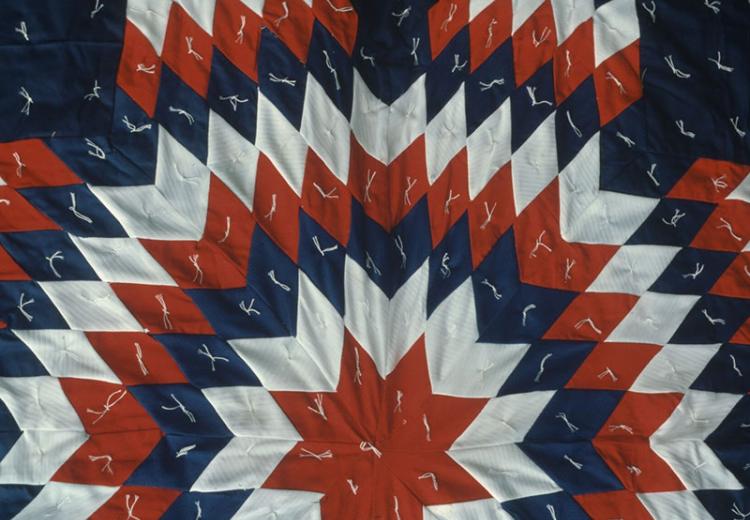History in Quilts

History in Quilts: Lone Star Quilt.
"We Americans have adopted quilts as a symbol of what we value about ourselves and our national history."
--From "Speaking of Quilts: Voices from the Late Twentieth Century" by Laurel Horton
Throughout history, women and sometimes men have used the art of quilting for many diverse purposes: to keep warm, to decorate their homes, to express their political views, to remember a loved one. Made by hand—often collaboratively—using familiar materials such as scraps of clothing, quilts are personal and communal, aesthetic and functional. The lessons in this unit are designed to help your students recognize how people of different cultures and time periods have used cloth-based art forms to pass down their traditions and history.
Quilting continues to be largely a home-based form of art engaged in primarily by women. Heighten your students' awareness of how quilts have reflected and continue to reflect the lives of the people who create them, and of how quilts record the cultural history of a particular place and time. This theme of History in Quilts contains two separate lessons that can stand alone or be taught in conjunction with one another.
If your students explore the past through their own family history and ancestors, this unit could be used as a tool to focus on those aspects of your curriculum.
Guiding Questions
What is a quilt? What elements make up a quilt?
How are art and history connected through quilts?
What are some of the purposes and uses that quilts have served in different places and cultures in the past? What function do quilts have today?
Learning Objectives
Define what a quilt is and describe some of the historic purposes and uses of quilts.
Explain what a freedom quilt is and how this type of quilt was used historically in the U.S.
Explain what a patriotic quilt is and what types of symbols are used in this type of quilt.
Identify elements in quilts, such as colors, shapes, patterns, and symbols.
Discuss customs represented by the design and creation of quilts.
Understand how quilts can be objects of both everyday use and artistic expression.
